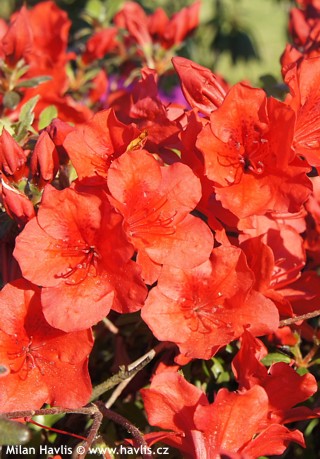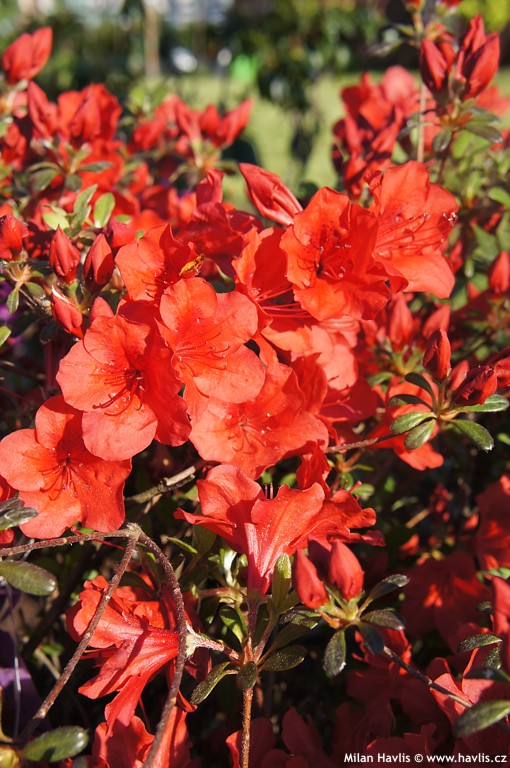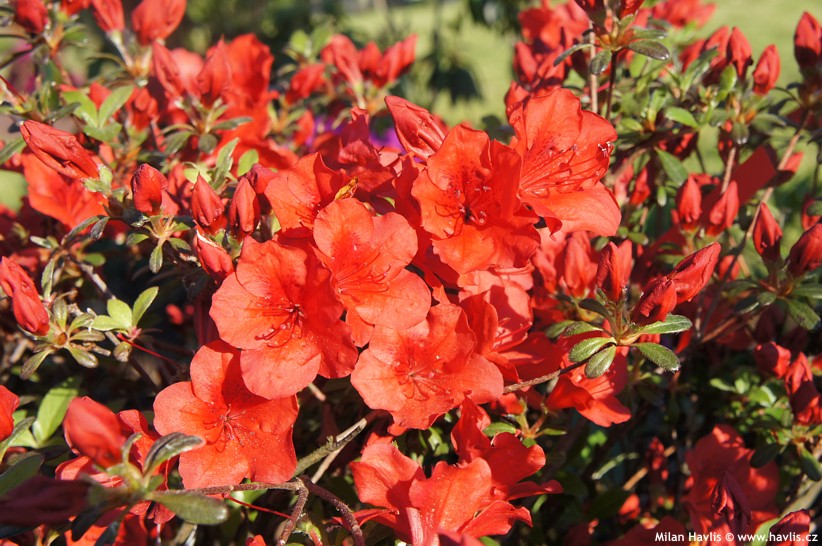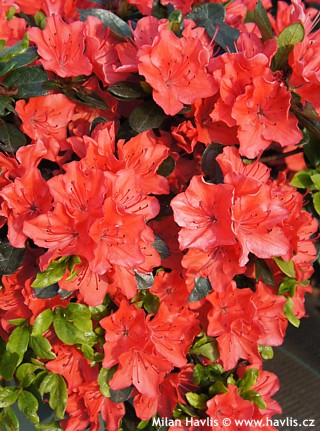Azalea japonica 'LYSANDER' Japanese azalea
size/type
medium-sized shrub,medium-sized shrub
usual height
0,5-1m
usual width
0,6-1,5m
leaves
evergreen broadleaf
colour of leaves
flowers
showy
colour of flowers
blooming time
May-May
location
semi-shade / partial sun
USDA zone (lowest)
7 (down to -23°C)
winter protection
for zone 5+6

for zone 7

categorized
Azalea
Japanese azaleas are very popular features of our gardens. In their home climate they grow to relatively substantial shrubs, as opposed to limited sizes in our continental, dry climate. They are very floriferous, maintenance-free shrubs that usually bloom from mid to late spring.Description of the plant:
Kurume azaleas are supposed to be a species of its own. Still, most of them were hybridized with other species or varieties so now they are all classified as Japanese azaleas, at least in commerce. Lysander is one of those and believe me that when once you have seen its uniqueness you will not care about its classification whatsoever and concentrate solely on its beauty. From early to late May it makes an eye-catching display of medium-sized, trumpet-like flowers with rounded petals of such an intense but at the same time warm shade of red that makes many designers call Lysander an orange azalea. Well, to me orange is a colour of a fruit which Lysander can hardly be compared with but I can understand their effort in pointing out at the extraordinary colour. Moreover, the plant has so much red pigment that in autumn, when the leaves loose their chlorophyll, they turn deep red and remain so until early spring. They are evergreen, narrowly elliptic, slightly curved, and very glossy. Lysander azalea grows moderately into a prostrate shrub that gets wider than tall. Japanese azaleas can be clipped to shapes in early June. If so, do not use fertilizers enhancing growth rate. The size of new branches would get out hand and spoil the shape you are going to achieve. They need light, permeable soil that is acid, constantly moist (keep azaleas mulched at all times) and moderately fertile. Use fertilizers for rhododendrons and azaleas, or ericaceous plants. The best soil mix is 1/3 of peat, 1/3 of leaf-mould or lime-free compost, and 1/3 of soil from the hole where you are going to plant it. Azaleas have shallow roots, so do not plant not too deep. This variety proved hardy to -24°C° (USDA zone 6) but will probably take lower temperatures.
Last update 02-06-2013
QUICK PRICE OVERVIEW
CURRENTLY SOLD OUT
WANT TO TRY A SIMILAR PLANT?


















